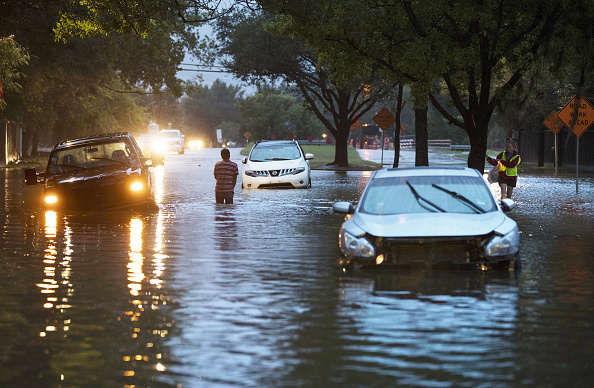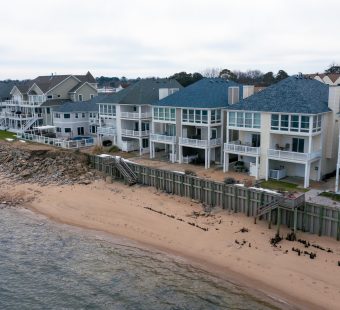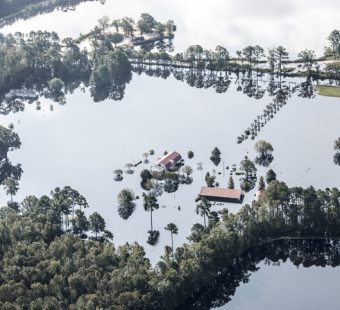
Expanded Triple-I Flood Risk Maps Provide Richer Perspective
Jeff Dunsavage, Senior Research Analyst, Triple-I
01/11/2021
The Triple-I Resilience Accelerator’s flood risk visualization tool is being enhanced with:
- National Flood Insurance Program (NFIP) data on “take-up rates” by U.S. county from 2010 to 2021, and
- Differences between take-up rates inside and outside of flood zones and in different proximities to flood zones.
These additions will expand the Accelerator’s visualization from covering only the current year to providing an historical perspective on how take-up rates have changed over time.
Take-up rates and resilience
Insurance take-up rates represent the percentage of people eligible for a particular coverage who take advantage of it. In the case of flood insurance, they are calculated as the number of insurance policies in force in a certain geography over the total number of eligible properties for which insurance can be bought.
Understanding flood insurance take-up rates is essential to assessing and improving communities’ ability to rebound from damaging events. About 90 percent of natural disasters in the United States involve flooding, the NFIP says, and much has been written about the flood protection gap.
“On average nationwide, only 30 percent of homes in the highest risk areas have flood coverage,” according to the Risk Management and Decision Processes Center of the Wharton School at the University of Pennsylvania, a Triple-I Resilience Accelerator partner. “Less than 25 percent of the buildings flooded by Hurricanes Harvey, Sandy, and Irma had insurance. Indeed, repeatedly after floods there is evidence of the United States’ large and persistent flood insurance gap.”
But understanding that gap to a degree that will support meaningful action requires comprehensive, granular data only NFIP can provide. It also requires the data to be available in easy-to-use formats. This is where the Triple-I/NFIP collaboration comes into play.
Key considerations to keep in mind when looking at take-up rates are year-over-year changes; whether the rates are by city, county, or state; and whether they are for all homes or homes in flood zones alone. During the first quarter of 2021, Triple-I’s Resilience Accelerator’s flood map will be updated with four options for users to visualize:
- Annual take-up rates from 2010 to 2018,
- 2019 take-up rates based on 2018 renewals only,
- County-wide and flood-zones-only take-up rates estimates for 2020, and
- County-wide share of dwellings in close proximity to flood zones.
Historical perspective
In 2019, NFIP started publishing historical data on NFIP insurance coverage, policies, and claims. NFIP’s decision to publish this data was a transformative point for industry practitioners, academics and those involved with flood insurance analysis. The Triple-I’s visualizations use NFIP’s full- and part-year data from 2010 to 2019 and our own estimates, based on this data, for 2020.
Dr. Michel Léonard, CBE, Triple-I vice president and senior economist says: “We’ve worked closely with NFIP to ensure that our visualizations reflect the most current, accurate information available on flood insurance take-up rates. In addition, we wanted to add to the discussion surrounding NFIP take-up rates by providing less common yet insightful ways to understand and visualize take-up rates, such as take-up rates for properties in flood zones only or the share of a country’s property in different proximities to flood zones.”
Flood coverage, as opposed to water damage from mechanical breakdown inside a house, isn’t included in most homeowners insurance policies, so many homeowners may not realize they don’t have it if their bank didn’t require them to buy it before providing a mortgage. Until recently, flood insurance was considered an “untouchable” risk for private insurers to write, so the NFIP was the only game in town.
In recent years, however, Congress adopted new laws to support the emergence of a robust domestic private flood insurance market. Last year, regulators provided rules that allowed private carriers to offer flood policies outside of NFIP and to qualify for the mortgage flood insurance requirement. Carriers and reinsurers are expanding their use of sophisticated models to underwrite flood risk, driving the growth of private sector flood insurance.
“We want to acknowledge and stress how significant the NFIP Policy and Claims data is to increasing our understanding of flood risk,” Léonard said. “Good data takes a lot of work, and NFIP’s commitment to making this data available is a perfect example of public-private partnerships delivering concrete value.”



